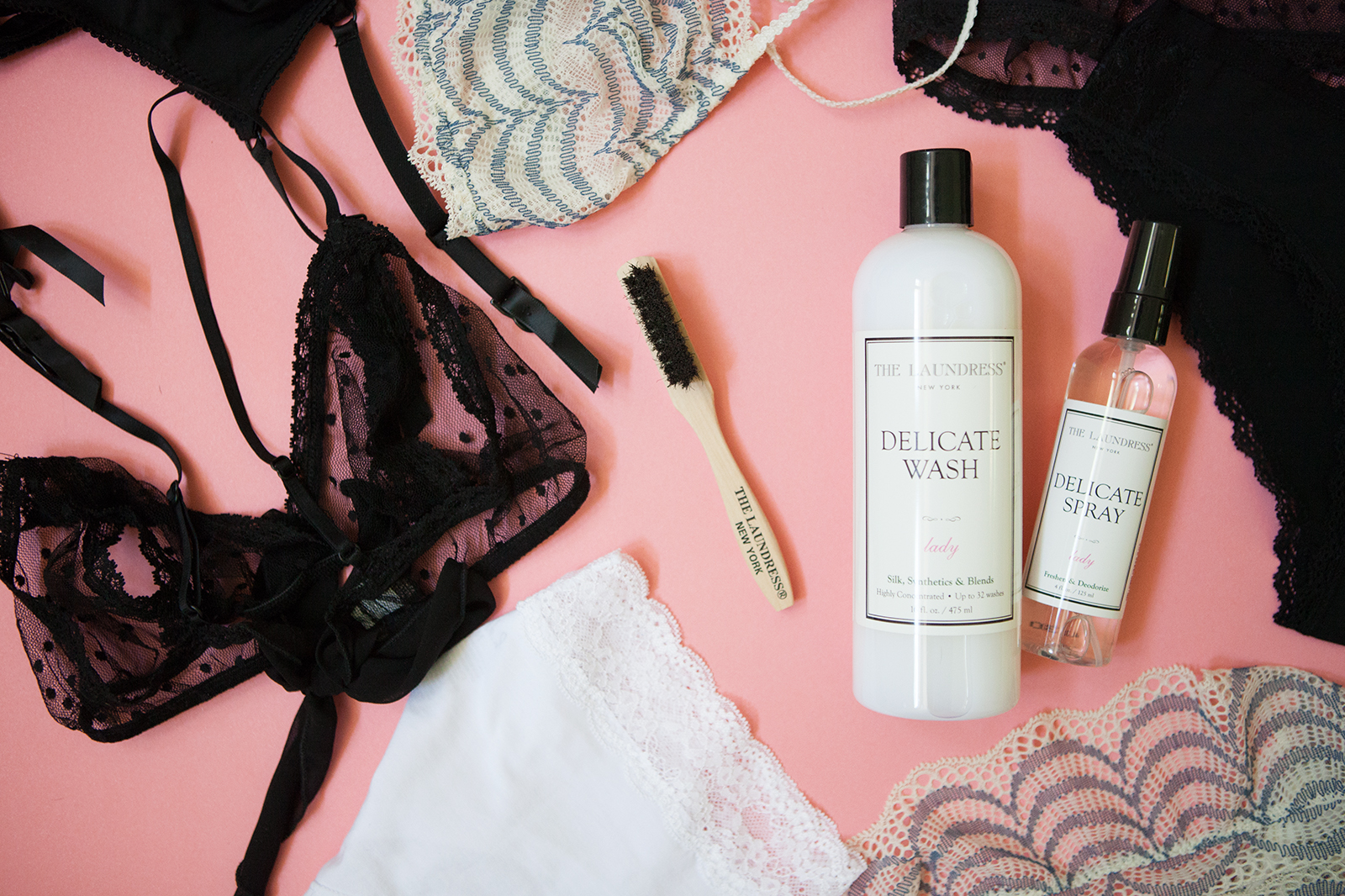
How To Care For Your Unmentionables
Written by James Kicinski-McCoy
Photography by Photography by James Kicinski-McCoy
As women, we tend to drop a good amount of money on lingerie (oops!), so it’s important to keep it in the best shape possible in order to get the most bang for our buck. Underwear and bras are called “delicates” simply because they’re made out of delicate materials, like lace, chiffon, special cottons, or silk. Most of us wash them by hand in fear of destroying them in the washing machine, though some of you might be reading this thinking, “Wait, I’ve always just thrown them in the wash alongside everything else!” Not to mention, lingerie needs to be dried and stored with extra care. To get a crash course in laundering our intimates, we tapped the clothing-care experts of The Laundress, co-founders Gwen Whiting and Lindsey J. Boyd, to find out their pro tips and tricks below.
Are there certain items or fabrics you recommend handwashing vs. machine washing?
“Absolutely. Handwashing is the gentlest way to wash items, so it’s the best method when caring for delicates or woolens at home. We always handwash bras, bathing suits, and delicate undergarments as well as items consisting of silk, wool, or lace. We wash embellished pieces by hand, too!”
What lingerie items and fabrics are okay to machine wash? How do you recommend washing those items?
“Machine washing is great and very efficient when caring for items made of durable fabrics like cotton, linen, and polyester. However, it’s the most aggressive approach and is usually not advised for delicate lingerie. When treating cotton or polyester nighties, sans-underwire t-shirt bras, everyday undies, and robes, machine washing is completely appropriate. First, pretreat soiled areas with a stain fighter like The Laundress Wash & Stain Bar. Then, prepare to wash by setting the machine to the delicate cycle and adding the correct dosage of a mild detergent like our Delicate Wash. Opting for warm water will deliver the most thorough clean. We recommend inserting smaller items likes undies into a mesh bag when washing, so that they are protected from tangling, snagging, or getting lost during the wash cycle. Always air dry to preserve color and elasticity! Negligee made of silk, satin, or silk-like synthetics, or those that have detailed lace, padded pushups, and supportive underwire should all be washed by hand. Simply fill a wash basin or sink with tepid water and add 2 capfuls of Delicate Wash. Leave to soak for 30 minutes. Then, rinse well by running tepid water through items until rinse water is no longer soapy. Gently press out excess water and do not wring. Again, always air dry!”
What’s the best way to keep undergarments looking new and vibrant?
“Opting for handwashing and air drying instead of using the washing machine and dryer is a sure way to make your lingerie last! Handwashing is the gentlest method of laundering, therefore better for delicate fabrics. Plus, the washing machine often holds onto lint which makes items appear faded post-wash. We always advise skipping the dryer because its high heat will reduce the elasticity of fabrics and lead to the fabric’s deterioration.”
How often should you wash your bra?
“After every two to three wears. You can freshen your flirty favorites between wearing and washing by spritzing them with our nontoxic, allergen-free Laundress Delicate Spray, scented with notes of rich amber, bergamot, lavender, and musk.”
How should you store your delicates?
“Bras are best stored with cups folded one into the other or laid open and stored stacked against other bras. All lingerie should be stored clean and in a cotton bag with a zip closure for preservation.”
Best tips for getting out bra or underwear stains?
“The Laundress Wash & Stain Bar is our go-to product for removing stains from delicate straps and hard-to-reach areas. It’s an allergen-free vegetable soap with a bit of borax, so it’s gentle on skin, but tough on stains. Pretreat with each wash to prevent buildup!”
Are there certain lingerie fabrics that are easier to care for?
“Items made of cotton, linen, and durable synthetics like polyester or nylon are easiest because you can let the washing machine do most of the work. Silk pieces are a bit more cumbersome to care for because they typically need to be washed by hand.”
Any other tips you can spill?
“Even if a piece of lingerie may not visibly have stains, it is still important to pretreat with each wash to prevent buildup of body oils. Oh, and did we mention never to put intimates in the dryer?”
Share this story




